Recommended Books on Microscopes
Microscope World does not sell any books on Microscopes. However, below you will find some Microscope books that may be helpful. Microscope World has provided these links as an easy way to locate some microscopy books quickly.
 Fundamentals of Light Microscopy and Electronic Imaging (Second Edition)
Fundamentals of Light Microscopy and Electronic Imaging (Second Edition)
by Douglas B. Murphy and Michael W. Davidson
This book is recommended for graduate students, researchers getting started in the field of microscopy, as well as researchers and professionals. The book describes the hardware of the system, while also explaining the physics principles of microscopy on a simplistic level for basic biologists. The book is a mix of theory and methods. PowerPoint slides of the artwork from the book can be found here.
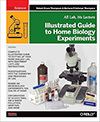 Illustrated Guide to Home Biology Experiments
Illustrated Guide to Home Biology Experiments
by Robert Bruce Thompson and Barbara Fritchman Thompson
This book is great for middle school and high school students looking for educational and fun experiments. This guide teaches you the basics of biology lab work and shows you how to set up a safe lab at home. Homeschoolers as well as hobbyists can use this book to learn biology at home.
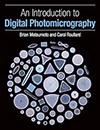 An Introduction to Digital Photomicrography
An Introduction to Digital Photomicrography
by Brian Matsumoto and Carol Roullard
This book provides an overview of microscopy and photomicrography. About a third of the book is devoted to covering a good understanding of the compound microscope and how it works along with the correct setup for various optical and image enhancement techniques. You can read a full review of this book on the Microscopy-UK.org website.
 Worlds within Worlds: An Introduction to Microscopes
Worlds within Worlds: An Introduction to Microscopes
by Bruno Kremer, 2024
This book is written especially for beginners. It provides help in learning the correct use of a microscope and the production of preparations. Structured clearly in 25 short chapters, it allows the reader to progress in manageable stages. Each step focuses on a particular theme, introducing the relevant techniques. From illumination to observation, from slide preparation to staining, this book supplies all the building blocks needed for skilled use of microscopes.
by Betty Nguyen MD and Brandon Pham MD, 2024
This book is an introduction to the examination of tissue and cells under a microscope. With illustrations and simple explanations, this book teaches children (and adults) about microscopes, body tissue, cells, cellular changes, tumors, cancer, autopsies, and more.
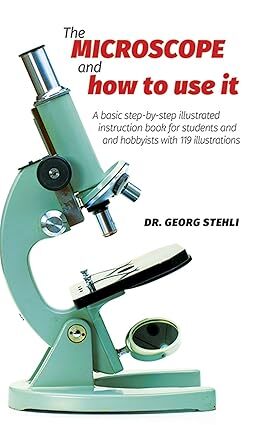 The Microscope And How to Use It
The Microscope And How to Use It
Dr. Georg Stehli, 1970 English edition translated from German, soft cover, 157 pages, b/w illustrations.
This is a more technical book (ages 12 and up) and spends time discussing the preparation of samples, and the variety of microscopic life found around us. This includes life in pond water, plants, animals and bacteria. The book is written in non-technical language but contains some technical concepts such as making thin slices of a specimen and fixing and dehydrating them before mounting as permanent slides.
1995. Werner Nachtigall. Sterling Publishing. 160 pages, soft cover, full color.
Explore the tiny universes hidden within plants, animals, rocks and minerals, and uncover the wonders of working with a microscope. Learn about lenses and lighting and preparing specimens for study. See how to take photographs through a microscope and view intriguing sights. This is a very popular book and contains more complete and sophisticated information than most microscope books. Best for a motivated child from age 10 up.
1997, Shar Levine and Leslie Johnstone. Sterling Publishing.
Did you know there are fossils in your toothpaste? Have you ever seen the cells of an onion skin? Discover a whole new world before your eyes by looking into a microscope. Try dozens of experiments using things found around the house, from vegetables to rocks, fish to flowers. See the veins of a leaf and discover the tiny hooks that hold a feather togther. Get to know the parts of your microscope and how lenses work to make an image. For ages 9-12
80 pages, soft cover.
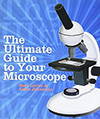 The Ultimate Guide to Your Microscope
The Ultimate Guide to Your Microscope
2008, another book by Shar Levine and Leslie Johnstone.
This interesting and detailed guide shows you how to look closely at bugs, water, food, plants and pollen, and even body parts like fingernails using a microscope. It is full of photomicrographs (pictures taken through a microscope) and includes a form that you can use to keep track of your specimens. There is a troubleshooting section for parents and teachers.
by Kenneth G. Rainis, Bruce J. Russell, soft cover, 288 pages, 1997
Another excellent (but expensive!) book on micro life. It concentrates mostly on aquatic life (protozoans and aquatic microanimals) but also contains sections on bacteria, microfungi and life found in soils and on vegetation. The excellent color microphotographs are the high point in this book even though the text is somewhat technical. (Ages 12 and up).
by C. Oxlade, Corinne Stockley
Reading level: Ages 7-10
Paperback - 48 pages (December 1989)
The Usborne series books are always good and richly illustrated. We haven't reviewed this book yet but I expect it to be good (and the price is right!)
2006 by Kirsteen Rogers (Editor)
Reading level: Ages 9 and up
Soft cover - 96 pages
Another Usborne series publication. The cover image alone makes you want to get one! Fantastic electron microscope photographs of samples like a fly's eye, flu virus and even individual atoms. Also includes project ideas with step by step instructions on how to use your microscope and see everyday objects.
Paperback - 232 pages reprint edition (June 1977 reprinted from 1941 edition) Dover, with 142 illustrations. Partial review from Amazon: "With a simple microscope and this book, you can embark on 59 wonderful adventures in the natural world — make discoveries about the structures of numerous microscopic animals; find out what everyday objects and foods really look like at the cellular level; gain an understanding of how to prepare specimens and slides; and learn about many scientific phenomena such as how a fly can walk upside down on the ceiling. It's all here in simple-to-understand language and 142 clear line drawings. The author first examines under the microscope such everyday objects as a human hair, air bubble, scale of a herring, poppy seed and sugar crystal, and then offers through-the-microscope views of such creatures and objects as the water flea, hydra, house fly, amoeba, euglena, volvox, diatoms, desmids, algae, blood corpuscles, honey bee, rotifer, water-mites, potato starch, and other food substances, lichen, paramecium, coffee, sponge, chalk, yeast, bacteria, mustard, pepper, bryozoan, moss, mushroom, molds, cotton, and other textile fibers, ferns, dragon-flies, flea, spider, roots, and other plant structures, paper, aphid, fingerprints, nervous system of the grasshopper, and more." (Ages 10? and up)
 A World in a Drop of Water : Exploring With a Microscope
A World in a Drop of Water : Exploring With a Microscope
by Alvin Silverstein, Virginia B. Silverstein
Reading level: Ages 9-12
Paperback (September 1998)
Dover
Alvin Silverstein is an accomplished author of many books in science and health. Within every drop of pond water lurks an invisible world, alive with an amazing variety of microscopic animals. And with the help of this book and a microscope, you can bring these tiny creatures into focus and discover the ways in which they live. You'll trace the path of a blob-like amoeba as it stretches out its pseudopods to hunt and gobble up its prey, and you'll see the life-or-death water ballet of a slipper-shaped paramecium as it swims away from its mortal enemy, the pincushion-shaped suctorian. You'll also meet the euglena, classified as both plant and animal; the rotifer, a creature with two wheels of whirling hairlike projections that help it move by squeezing in and out like an accordion; and the incredible hydra, a fearsome bully that constantly threatens other small animals with its crown of grasping tentacles.
by Theodore L. Jahn, soft cover, spiral bound, 1979
If you are studying single celled life found in fresh water then you should have this book! It's expensive but worth every penny. When the founder of our company created the three video series "The Protozoans", he relied on this book heavily for research. It includes valuable information and many black and white illustrations of literally hundreds of fresh water protozoa.
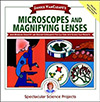 Microscopes and Magnifying Lenses
Microscopes and Magnifying Lenses
 Hidden Worlds: Looking Through a Scientist’s Microscope
Hidden Worlds: Looking Through a Scientist’s Microscope
by Stephen Kramer (Author) and Dennis Kunkel (Photographer)
Dennis Kunkel has been photographing microscopic worlds for over 25 years. This book shows images from scanning electron microscopes of everyday items such as a mosquito’s foot, pollen, a blade of grass, and sugar crystals. In the book Hidden Worlds Dennis explains how he captures his microscopic images, how he prepares his samples, and how different types of microscopes operate. This book follows Dennis as he collects samples in the field from Mount St. Helens to Hawaii.
 Modern Microscopy: A Handbook for Beginners and Students
Modern Microscopy: A Handbook for Beginners and Students
by M.I. Cross, Martin J Cole, published in 1922
This is a classic microscopy book that is useful for students and beginners exploring the use of a microscope. The book is broken into two parts:
- The Microscope, and Instructions for its Use
- Microscopic Objects: How Prepared and Mounted
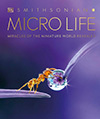 Micro Life: Miracles of the Miniature World Revealed (DK Secret World Encyclopedias)
Micro Life: Miracles of the Miniature World Revealed (DK Secret World Encyclopedias)
by Smithsonian Institution
This is a great book for anyone who enjoys photography, nature, and biology.

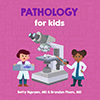 Pathology for Kids: A Fun Picture Book About Examining Tissue and Cells Under a Microscope for Children
Pathology for Kids: A Fun Picture Book About Examining Tissue and Cells Under a Microscope for Children Exploring With the Microscope
Exploring With the Microscope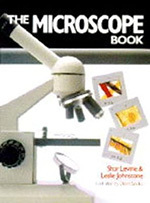 The Microscope Book
The Microscope Book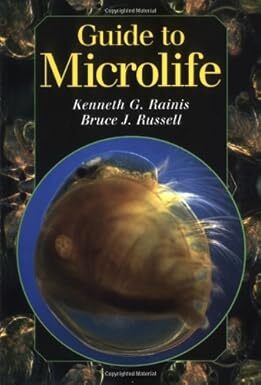 Guide to Microlife
Guide to Microlife 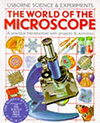 World of the Microscope
World of the Microscope 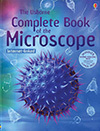 Complete Book of the Microscope
Complete Book of the Microscope 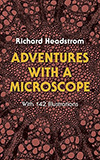 Adventures With a Microscope
Adventures With a Microscope  How to Know the Protozoa
How to Know the Protozoa


